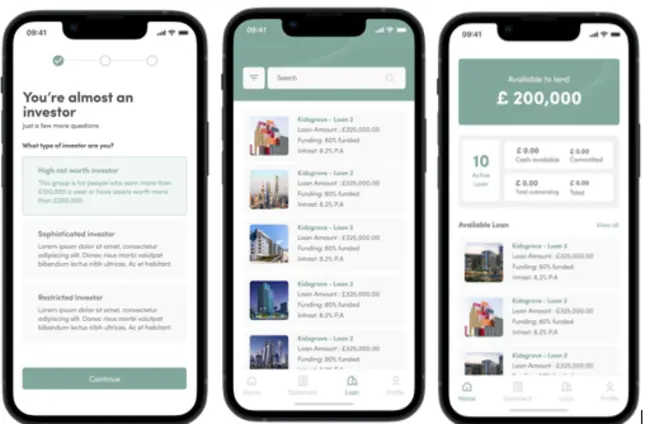Product-led growth is rapidly becoming the engine behind today’s most successful tech startups. In a world where users expect instant value, intuitive onboarding, and seamless interactions, your product’s design has a direct role in driving growth.
Design is no longer just about aesthetics or visual appeal. For startups aiming to grow sustainably, UI/UX is now a strategic growth tool. It influences how users sign up, how quickly they activate, how often they return, their overall experience, and whether they refer others. In essence, user experience is growth.
As we move deeper into the digital-first economy, the startups that will lead in the coming years, 2024 and beyond, are those that intentionally build for user satisfaction, early and often.
Let’s talk about data. Research has shown that 38% of people stop engaging with a website or product if the content or layout is unattractive. And according to some UX industry reports, companies that prioritise design see a 32% increase in revenue and 56% higher total returns to shareholders. Those are measurable outcomes powered by design decisions.
UI/UX as a Growth Engine
Startups operate in fast-paced, high-stakes environments. There’s little room for friction. First-time users must find value in seconds, not minutes. If they can’t find what they need, they won’t stick around.
The truth is simple: good UI/UX creates clarity, and clarity drives growth.
Locally, Nigerian startups like Interswitch, PiggyVest, Opay, Trade Lenda, Moove, and many others have demonstrated the power of thoughtful user experience. From smooth sign-up processes to intuitive dashboards and smart notification systems, these products are designed to feel effortless. That’s not by accident; it’s by design.
Globally, many companies owe their explosive growth to a frictionless user experience. Whether it’s simplified navigation, self-serve onboarding, or well-placed nudges, these companies grow by making things easy for users from the start.
So, how can your design drive product-led growth? Let’s break it down.
Optimise Onboarding for Clarity and Speed
The first five minutes are crucial. Can a new user understand your product’s value without hand-holding? If not, that’s a red flag. Effective onboarding is all about simplicity. Guide users gently. Use short tooltips, pre-filled defaults, and progress indicators to help them move forward. Avoid clutter. Test and retest until users no longer feel confused during their first interaction.
In many growth-focused startups, redesigning onboarding led to a 15-25% increase in activation rates within three months. All from better UX.
Design for Retention, Not Just First Impressions
Getting users to sign up is the easy part. Keeping them is the real challenge. Design can help you build habits. Use checklists, subtle reminders, and personalised dashboards to encourage repeat usage. When users see clear progress or value accumulation, they’re more likely to come back.
Retention-focused UX features like daily summaries, user history, and helpful tips can quietly power month-over-month growth. The design isn’t loud. But it’s effective.
Create Continuous Feedback Loops
Your users are a goldmine of insight, but only if you’re listening. In-app feedback prompts, satisfaction emojis, and easy-to-access support channels all show users that you care. More importantly, feedback helps you build better, faster. And when users see their suggestions reflected in future updates, it deepens their loyalty.
Some startups have embedded short feedback forms at critical moments in the user journey and saw response rates as high as 45%. These small improvements shape better products and better growth outcomes.
Use Microinteractions to Improve Engagement
Subtle animations, gentle transitions, and responsive taps – these tiny design details add up. They make the product feel smooth and polished.
Microinteractions are not just for show. They provide real-time feedback, reduce errors, and create emotional satisfaction. A user clicking a button and seeing instant confirmation is more likely to trust your product and return. These moments of delight build engagement and trust.
Keep Navigation Simple and Consistent
Nothing breaks the user flow faster than confusion. Menus, tabs, and actions should be exactly where users expect them to be. Consistent patterns help reduce the cognitive load, allowing users to focus on completing tasks. If users have to stop and think about how to find something, you’ve already lost momentum.
One best practice is to watch users navigate your product without guidance. Where they pause or get stuck is where you need to redesign. A cleaner, more consistent layout often leads to reduced drop-off rates by 10-15%.
For tech startups in 2023, gearing towards 2024, growth is no longer just about ads or aggressive marketing. The product must sell itself. That’s the core principle of product-led growth. And UI/UX is how you get there. From onboarding to navigation to feedback loops, every element of your design plays a role in how users experience and promote your product. The good news? These aren’t expensive changes. They’re intentional ones.
When design is prioritised early, startups scale smarter. Growth becomes organic. And users become your most powerful marketing channel. So, if you’re building a product that you hope will scale, don’t wait for growth before you invest in design. Start with it.
By Olabode Felix Akinyemi





